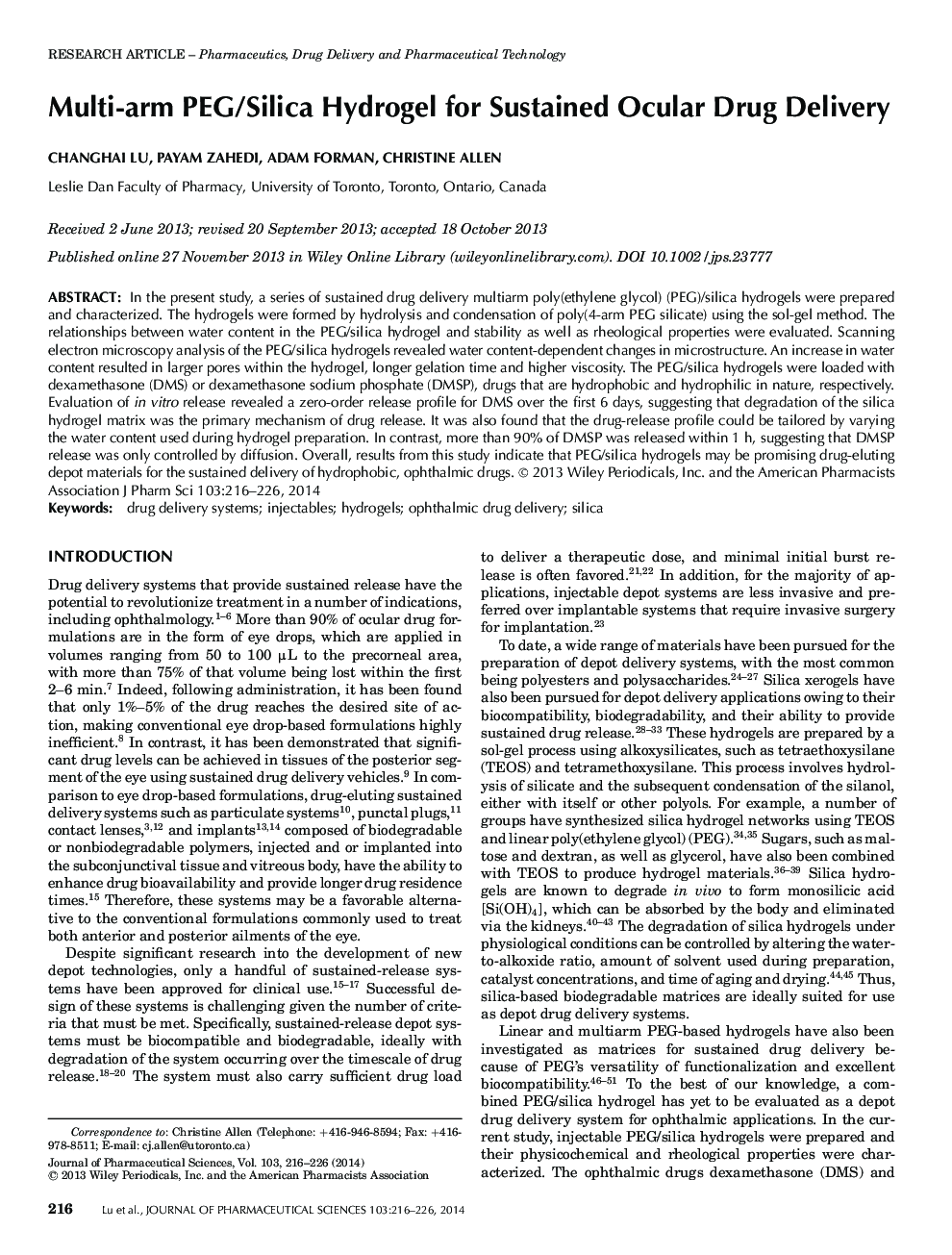| Article ID | Journal | Published Year | Pages | File Type |
|---|---|---|---|---|
| 10162650 | Journal of Pharmaceutical Sciences | 2014 | 11 Pages |
Abstract
In the present study, a series of sustained drug delivery multiarm poly(ethylene glycol) (PEG)/silica hydrogels were prepared and characterizedThe hydrogels were formed by hydrolysis and condensation of poly(4âarm PEG silicate) using the solâgel methodThe relationships between water content in the PEG/silica hydrogel and stability as well as rheological properties were evaluatedScanning electron microscopy analysis of the PEG/silica hydrogels revealed water contentâdependent changes in microstructureAn increase in water content resulted in larger pores within the hydrogel, longer gelation time and higher viscosityThe PEG/silica hydrogels were loaded with dexamethasone (DMS) or dexamethasone sodium phosphate (DMSP), drugs that are hydrophobic and hydrophilic in nature, respectivelyEvaluation of in vitro release revealed a zeroâorder release profile for DMS over the first 6 days, suggesting that degradation of the silica hydrogel matrix was the primary mechanism of drug releaseIt was also found that the drugârelease profile could be tailored by varying the water content used during hydrogel preparationIn contrast, more than 90% of DMSP was released within 1 h, suggesting that DMSP release was only controlled by diffusionOverall, results from this study indicate that PEG/silica hydrogels may be promising drugâeluting depot materials for the sustained delivery of hydrophobic, ophthalmic drugs© 2013 Wiley Periodicals, Incand the American Pharmacists Association J Pharm Sci 103:216-226, 2014
Related Topics
Health Sciences
Pharmacology, Toxicology and Pharmaceutical Science
Drug Discovery
Authors
Changhai Lu, Payam Zahedi, Adam Forman, Christine Allen,
